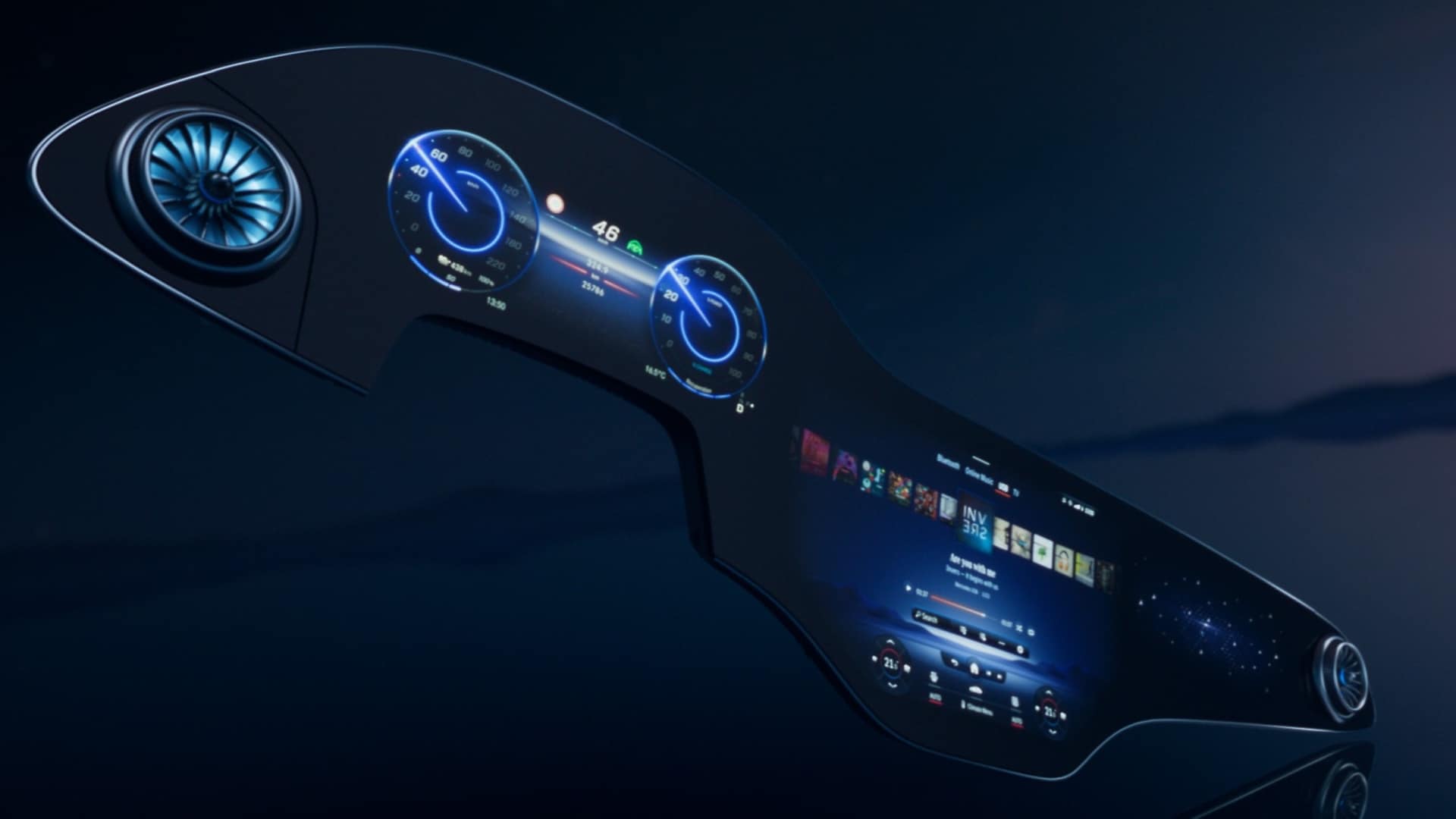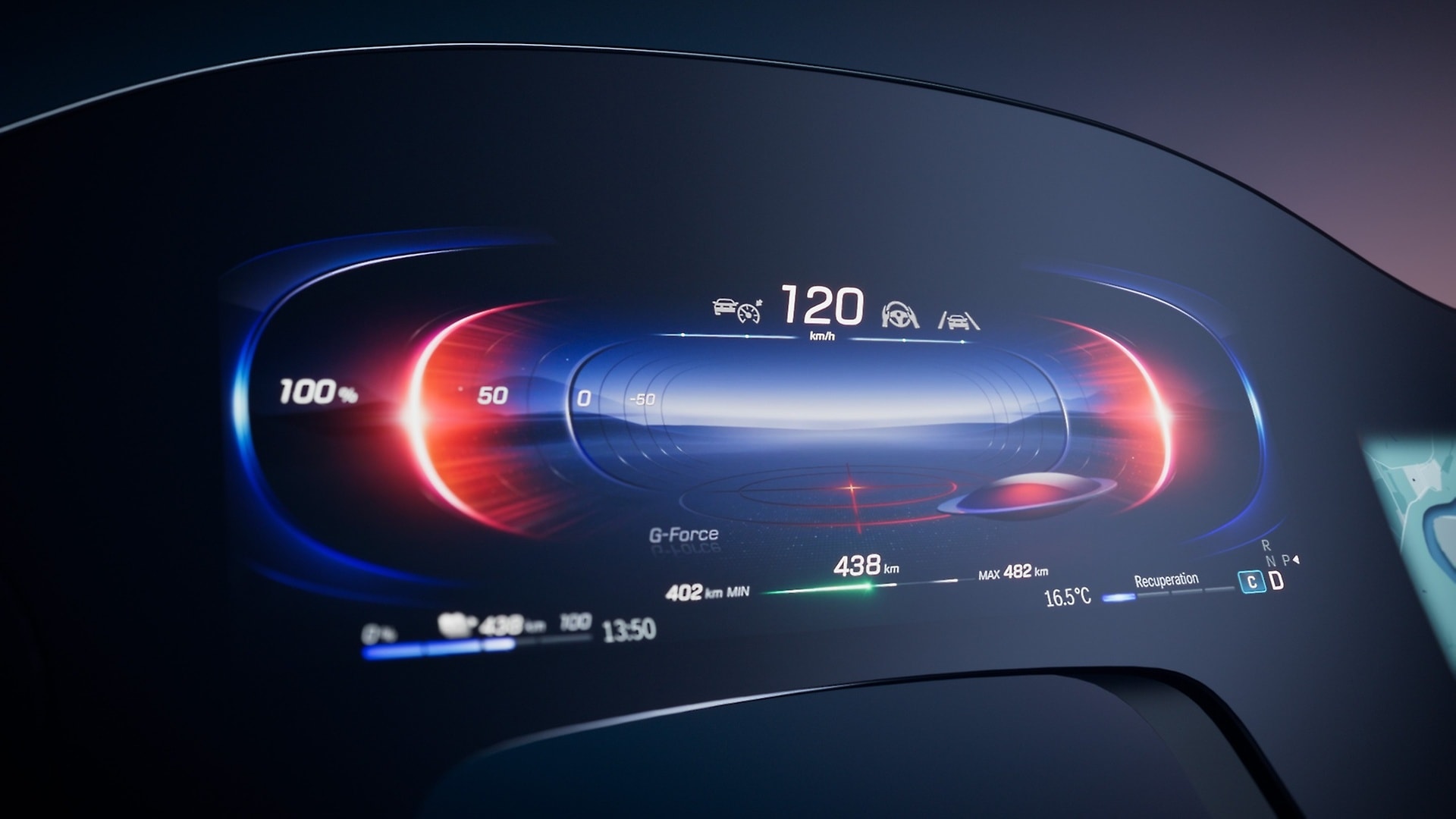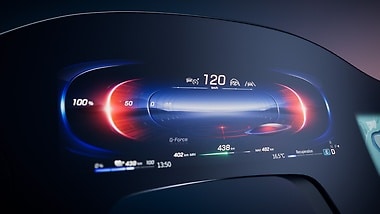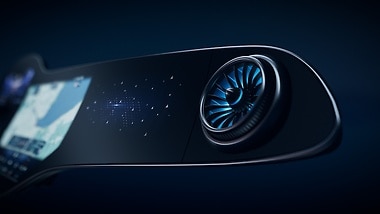The MBUX Hyperscreen is an example of digital/analogue design fusion: several displays appear to blend seamlessly, resulting in an impressive, curved screen band. Analogue air vents are integrated into this large digital surface to connect the digital and physical world.
The MBUX Hyperscreen is surrounded by a continuous plastic front frame. Its visible part is painted in an elaborate three-layer process in "Silver Shadow". This coating system achieves a particularly high-quality surface impression due to extremely thin intermediate layers. The integrated ambient lighting installed in the lower part of the MBUX Hyperscreen makes the display unit appear to float on the instrument panel.
The passenger also has its own display and operating area, which makes travel more pleasant and entertaining. With up to seven profiles, it is possible to customize the content. However, the entertainment functions of the passenger display are only available during the journey within the framework of the country-specific legal regulations. If the passenger seat is not occupied, the screen becomes a digital decorative part. In this case, animated stars, i.e. the Mercedes-Benz Pattern, are displayed.
For a particularly brilliant image, OLED technology is used in central and passenger displays. This is where the individual image points are self-luminous; non-controlled image pixels remain switched off, which means that they appear deep black. The active OLED pixels, on the other hand, radiate with high color brilliance, resulting in high contrast values, regardless of the angle of view and the lighting conditions.
This electrifying display appearance goes hand in hand with emotionally appealing visualisation. All the graphics are styled in a new blue/orange colour scheme throughout. The classic cockpit display with two circular instruments has been reinterpreted with a digital laser sword in a glass lens.
Thanks to its clear screen design with anchor points, the MBUX Hyperscreen is intuitive and easy to operate. An example of this is the display style EV mode. Important functions of the electric drive such as boost or recuperation are visualized in a new way, with a spatially moving clasp, and thus made tangible. A lens-shaped object moves between these clamps. It follows gravity and thus depicts the G-Force forces impressively and emotionally.
,xPosition=0,yPosition=0.5)






,xPosition=0.5,yPosition=0)